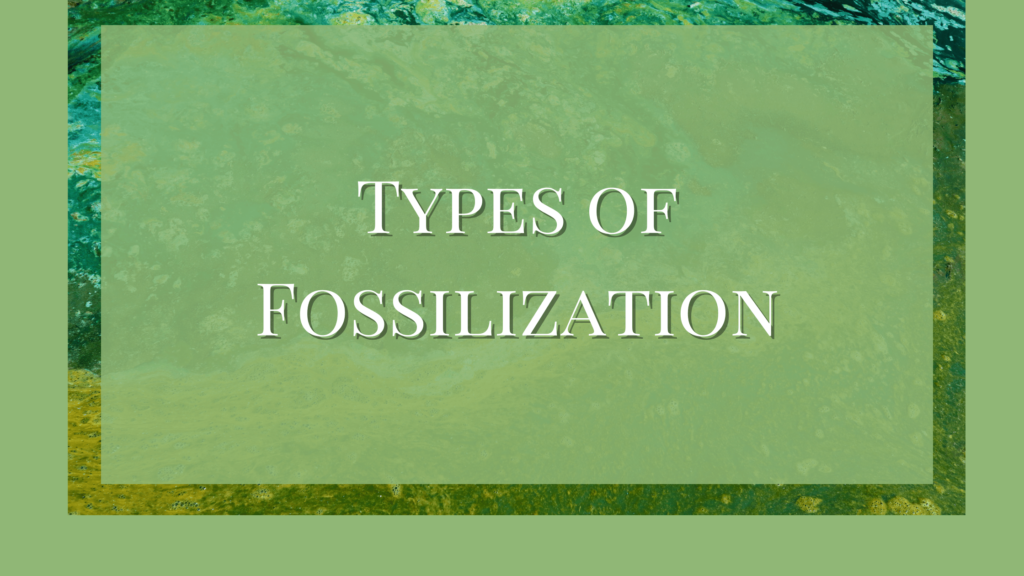Paleobotany is the study of fossil plants or plants that existed in the past and are now entirely extinct. These fossils are found buried deep under the ground, often on rocks.
This is a difficult branch of botany since fossil plants are difficult to obtain and they are rather scarce. Even when any fossil plants were found, they were scattered and had to be assembled to be able to identify.
This is a tough process of study. Cutting the fossils is difficult, its preparation is time-consuming and requires great labor and techniques.
What is Paleobotany?
The study of fossils is useful economically and academically. The economic interest lies in that some fossils are confined to definite strata of the earth’s crust. They are associated with petroleum, coal, and other similar things having economic value.
The academic interest lies in that their study clears up to a great extent the interrelationships and evolution of the ancient groups of plants.
The fossils help determine the climate of ancient times in different regions. Eg. During the coniferous period the earth was covered by very luxurious coniferous forests and it is assumed that the climate in those days was very uniform. It is because the plants that flourished in those times (the carboniferous period) were greatly the same on the whole surface of the earth.
According to one school of thought, the outer part of the Earth’s crust is solid and comparatively thinner than the interior of the Earth, which is supposed to have been molten before water and air appeared on Earth.
Some workers are of the opposite view. They believe that the interior portion of the earth is firmer and more solid while the outer crust of the earth consists of many, heavy metals like iron and lead. Whatever might have been the position but it is very clear that the first crust which formed the first surface might have been very uniform.
Later, when water and air appeared, the surface of the earth began to change as these two are destructive factors. Rain and air affected the surface of the earth to a great extent and at certain places, it sank and formed seas and oceans.
The rocks withered off, the volcanic eruptions and other changes took place which led to the change in the topography of the earth. Rivers coming from the mountains bring down pieces of rocks and large quantities of sand when they flow into the plains.
This sand settles down at the bottom of the river, along with the parts of animals and plants. This preservation takes place in different forms.
The fossils are mainly found in the sand that was brought down by its rivers from the mountains. This sand has become compressed and sedimentary rocks are formed at the bottom of the water. They contain the pieces of plants and entire bodies that have been surrounded by mud and salt so that they get a chance to be preserved. Such preservation takes place in two forms.
Impression
Impressions are surface markings of the plant materials or the markings of the internal cavities in the plant materials. The plant material gets covered by the surrounding mud deposition. This will cause the plant material to go into the cavity leaving its impression. In some fine fossils, even the details of venation, and structure of stomata and epidermal hairs have also been observed.
In other cases, plant material itself has decayed or turned into coal. However, the surface impressions cannot be relied upon. As we know, plants such as Equisetum (a pteridophyte), Ephedra (a gymnosperms), and Casuarina ( an angiosperm), all give the same impression but all of them are widely differentiated with no affinities or relationships with each other.
Petrification
Another method of preservation of great importance is that the plant material when lying in water has become unfiltered with mineral matter such as line, silica, magnesium salts, and other similar substances. These salts penetrate the minute cells. Later, the organic matter is replaced by these mineral salts. Here, the original organic matter may be destroyed. However, outline and general structure are preserved by these unfiltered substances.
Coal balls are found in coal mines, and are formed by the infiltrations of calcium bicarbonate.
In another method, the rare and small parts of the plants such as the seeds, pollen grains, and spores are preserved. Here the plant material falls in resin or amber extruded by plants such as pine trees.
Nomenclature of fossils
The fossils naturally would be pieces of plants. An entire plant could rarely have been preserved. This way only pieces can be studied. In such a study, the individual pieces are given botanical names just as in living plants.
The botanical names of fossil plants are not as significant as the living plants, Since they are represented by the pieces of plants, their generic names would be according to the parts such as leaf, stem, root, or reproductive structure.
- The stems are usually named with the suffix ‘dendron’ or ’xylon’ – Lepidodendron, Lygenodendron, Cladoxylon, etc.
- The leaves have a suffix ‘pteris’ or ‘phyllum’ – Lyginopteris, Sphenophyllum.
- Reproductive parts are suffixed ‘strobilus’ – Lepidostrobilus.
This way, Paleobotany is the study of the parts of fossil plants and in certain cases, results have been obtained.
Paleobotanists attempt to study the history of the plant kingdom and thereby learn the phylogenetic relationships of the plant groups. Thus far, there are six main problems which the paleobotanists need to attend to and solve.
- The nature of early Paleozoic and pre-Paleozoic Carboniferous sediments.
- The origin and ancestry of Silurian and Devonian land flora.
- Origin or leaf
- Origin of seeds
- The origin of angiosperms.
- The origin and changes in the existing flora.
Importance of Paleobotany
The study of fossil plants and the facts derived from them are of great importance as evidenced by the following:
- They throw light on the phylogeny and evolution of plants. The extinct plants tell us some stages through which existing groups have passed during their evolution.
- Paleobotanic research may help determine similarities and dissimilarities between plants of the past and their habitat.
- Fossil plants give a historical approach to the plant kingdom and are helpful in the classification of plants.
- Paleobotanic research is also helpful in understanding the formation of the earth and the evolutionary relationship among plants as well as the climatic conditions of the past.
- Fossil plants are used for the descriptive as well as comparative study of anatomy.
- The study of fossils helps in understanding the extinction of huge plants of the past.
Paleobotany in Modern Times
Paleobotany is inherently interdisciplinary and can be studied from biological, geological, or both perspectives.
In the past decades, paleobotanists needed knowledge of plant biology and geology to do their research. However, modern paleobotanists require an integrated approach to studying fossils. These days, branches of science such as biomechanics, geochemistry, microbiology, molecular biology, phylogeny, etc, are all used in the study of fossil plants.
On the other hand, paleobotany is important for geology and other branches. Paleobotany helps geologists with the biostratigraphy of rocks. They use pollen grains and spores as index fossils for biostratification.
These factors, along with algal cells or cysts, and plant macrofossils such as leaves and seeds help correlate terrestrial rocks from different geographical areas.
References
- Taylor, T. N., Taylor, E. L., & Krings, M. (2009, January 1). Introduction to Paleobotany, How Fossil Plants are Formed. Elsevier eBooks. https://doi.org/10.1016/b978-0-12-373972-8.00001-2
- (2017). Foreword. Transformative Paleobotany, xxi-xxiii. https://doi.org/10.1016/B978-0-12-813012-4.06001-0





I am genuinely thankful to the owner of this website for sharing his brilliant ideas. I can see how much you’ve helped everybody who comes across your page. By the way, here is my webpage Webemail24 about Social Media Marketing.